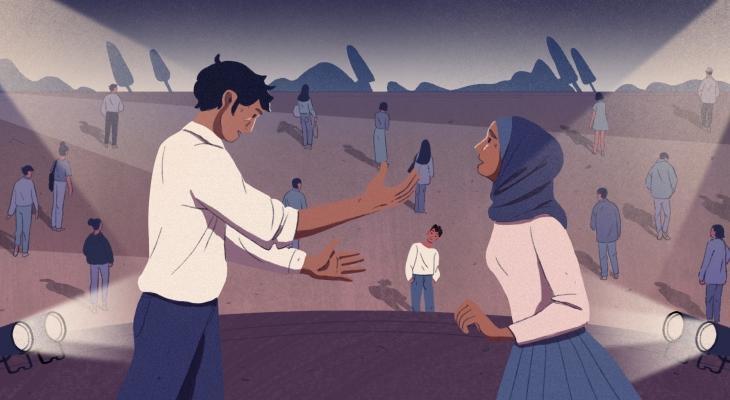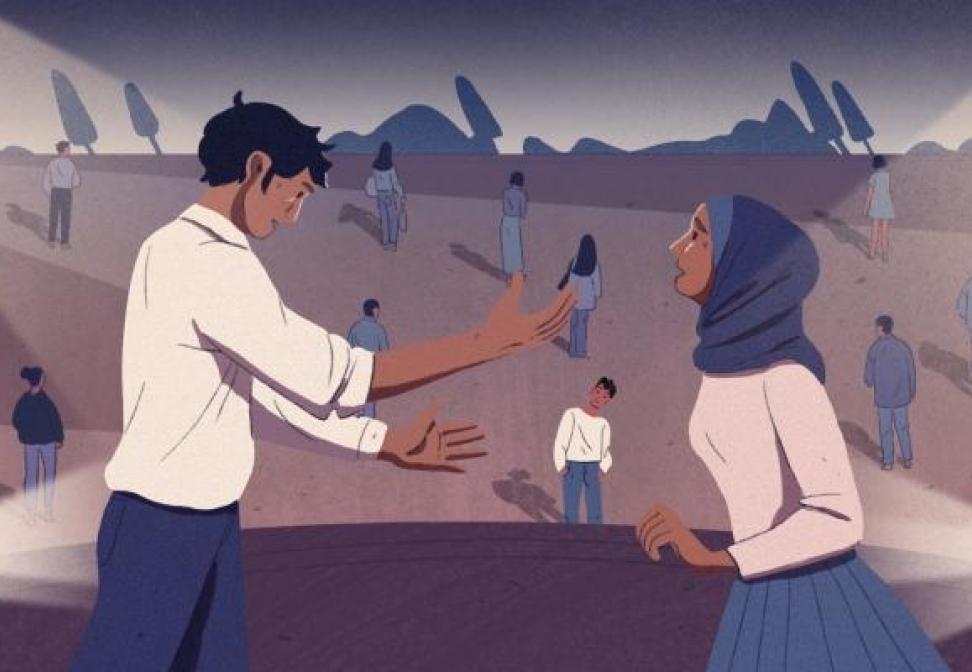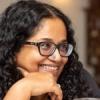From Journalist to Refugee Advocate
The year was 2001. I was on my way to Southern Thailand for a story. A story which needed me to “buy” a gun to write about how the Thai army was selling weapons to militants.
It was my first foray into investigative journalism. I was working for Time magazine and had the best bosses one could ask for.
My “fixer”, who took me in, was killed when he went back again to Thailand and I left to be with my father’s family in India. You know, just to stay safe.
Years later, I did a short documentary on baby trafficking and was warned by the trafficker that he would kidnap my daughter (who was a young girl back then) across the border and put her in the sex trade if anyone discovered his identity.
After completing the film, I started working on another documentary that looked into the trafficking of migrant workers to Malaysia. This was commissioned by Charles Santiago, the Klang Member of Parliament.
I had an interview scheduled with a trafficker for that particular evening but had left the house around noon for a corporate shoot.
However, I had to go home upon realising I had forgotten to bring some stuff along.
A shocking sight greeted me when I got back – my home had been ransacked. But nothing was taken except for my laptop and laptop bag. They, I guess, didn’t know the “pen” next to my laptop was actually a hidden camera.
I was devastated and scared, especially for my kids who thankfully, were not at home. This break-in was clearly related to my work. As a woman filmmaker/journalist, I didn’t have anywhere to go to. There are still no safety mechanisms put in place for women in the media and film world. No legislation looks into this issue of gendered violence against women that has been going on for years. Women journalists and filmmakers are more often the target of assault and bullying compared to our male counterparts, which involves being subjected to name calling and body shaming.
But here is the blessing in disguise – these experiences helped prepare me for the work I would do later in my life with refugees, asylum seekers and stateless persons in Malaysia.
I was working for Press TV some 13 years ago, when I started reporting on the Rohingya fleeing into Malaysia from Myanmar.
The first advice drummed into a journalist is to distance herself from the story and the people who make up the story. But how do you do that when listening to accounts of murder, rape, physical and sexual assault, internal conflicts, displacement, hunger, hopelessness and forced migration?
I could not do it. I wanted to know more about the Rohingya as I was struggling to understand the dizzyingly complex issues surrounding them.
I stopped work to bring aid, mobile clinics and schools to help the people. Friends came together to get doctors and medicine. They raised funds to set up schools and found volunteers to teach.
After a few years of working with the Rohingya on the ground, I did my first documentary on refugees: an “idiot’s guide” to understanding the complex issues surrounding this ethnic minority, who were fleeing Myanmar fearing death and persecution.
While working on the film, I met a trafficker who told me he was helping his people leave the overcrowded internally displaced peoples’ camps (IDPs) that didn’t have enough toilets or clean water supply. Food and medicine were scarce as more than half of the supplies were taken by the Myanmar army officers, politicians and middlemen.
The meeting with the trafficker kickstarted led to a second film, which looked at the sexual, physical, emotional and mental trauma unleashed against the Rohingya while in transit to Malaysia.
Women and men told me chilling accounts of rape and sodomy. Kids were also not spared. Some children were taken away, never to be seen again. I was told the sexual assaults happened in full view of everyone else.
During these interviews, I found out that young Rohingya girls were trafficked, held in trafficking camps along the Malaysia/Thai border and then sold as child brides to Rohingya men in Malaysia.
By the time I was working on these films, I had started working with different refugee communities in Malaysia– Palestinians, Syrians, Afghans, Somali, Sudanese, Sri Lankan Tamils and different ethnic groups from Myanmar. And all of them were struggling here, as the country has not ratified the 1951 UN Refugee Convention and therefore does not need to recognise refugees and asylum seekers.
Activists and others continue to work really hard to remind the government that it still has a responsibility to protect these vulnerable people.
Malaysia has ratified the Child Rights Convention (CRC), the Convention on the Elimination of All Forms of Discrimination Against Women (CEDAW), is a party to the UN Sustainable Development Goals 2030 and has ratified the New York Declaration, which has ratified almost all Conventions in the world.
While many people know about these incredibly difficult situations refugees face – death of family members, uprooting of families, abject poverty, life in limbo in Malaysia – through my work, I have come to understand that they are much more than the persecution they have endured.
I have been lucky, for these refugees have welcomed me into their homes, shared their food and stories. I have learned and become a better person from these interactions and friendships.
And in those intimate moments, I also discovered huge artistic talents amongst them – poets, dancers, musicians, theatre artists, photographers and filmmakers.
This led to the founding of The Refugee Fest in 2016, an arts festival that showcases the talents of the refugees and used that to build bridges between them and Malaysian society. By the time it hit the fourth year, the festival was recognised by many and became an advocacy platform.
We thought we were making good progress. Conversations were happening between Malaysians and refugees. The artists had also gone into a plantation, some 45 minutes away from Kuala Lumpur, Malaysia’s capital city to perform.
We were finally connecting different groups of people. We were ironing out hostilities and fears. We were making people understand that refugees are just like you and me, with the same hopes and dreams and aspirations for themselves and their children. We had successfully showcased the talents of refugees and in doing so, also demonstrated that they can contribute effectively to society if opportunities are provided for them to do so.
And then bham! The COVID-19 pandemic happened and we saw unprecedented levels of hate and xenophobia against the refugees. Initially, we comforted ourselves that these were just paid trolls, but we had to contend with the fact that a large segment of Malaysians indulged in hate speech as well when it didn’t dissipate after a few months.
But there was also goodness. The heartwarming thing was that Malaysians donated generously to enable us to provide food provisions, face masks, sanitary pads and sanitisers to not just poor Malaysians but also to refugees and migrant workers.
Where are we at now? In a limbo, I must say. So, much more work needs to be done.
I stepped down last year as festival director because the festival belongs to the refugees and they should take ownership of it. We are starting fresh this year, with the festival headed by Saleh Sepas who is an Afghan theatre director.
With that, the journey continues; the fight continues.
(Illustration: Ng Yin Shian)






